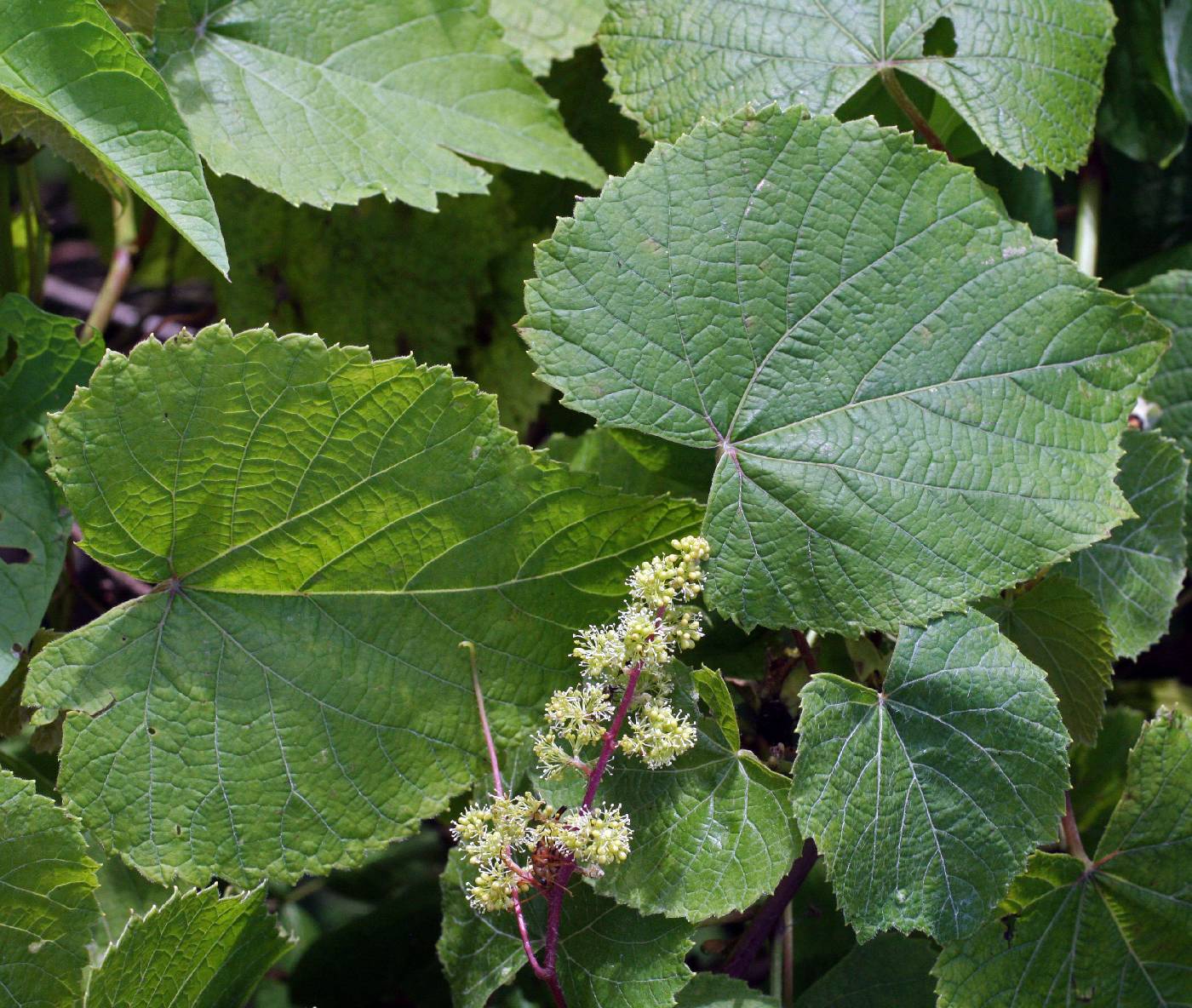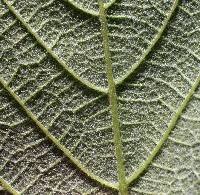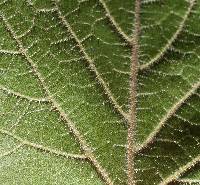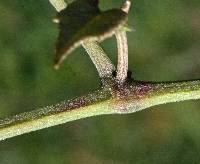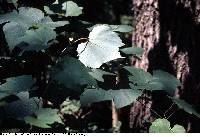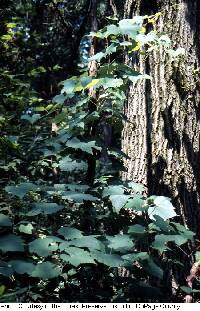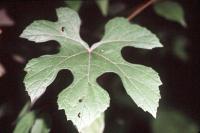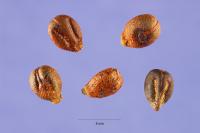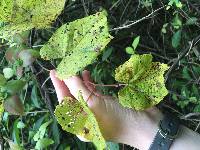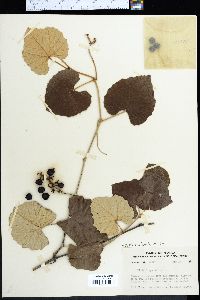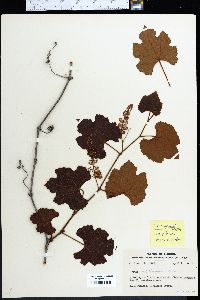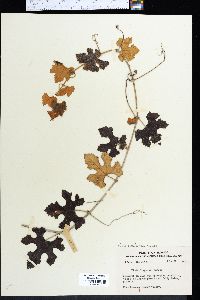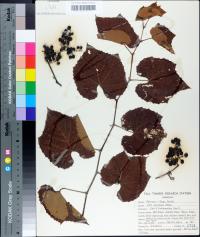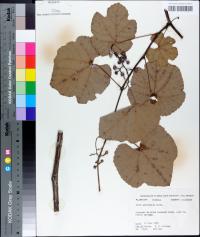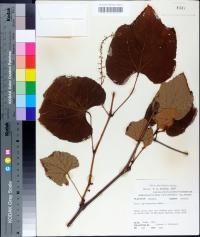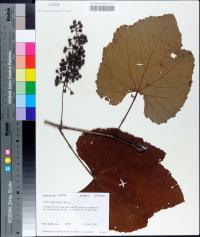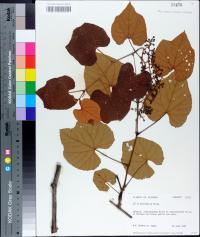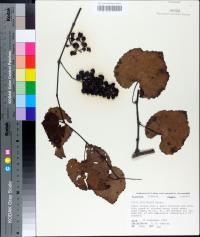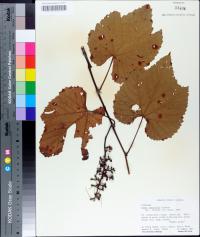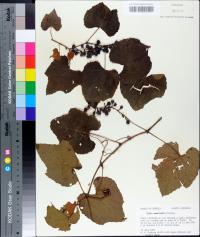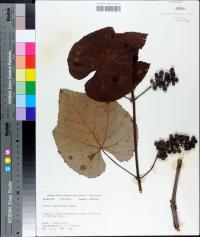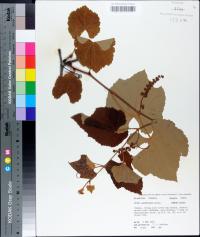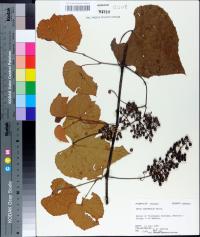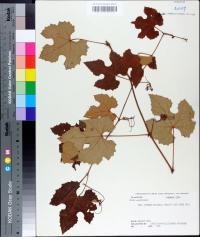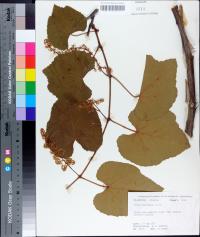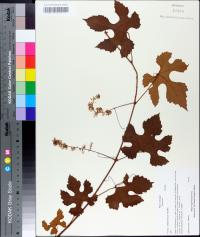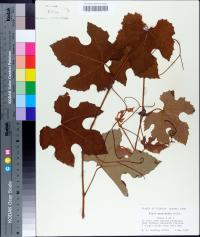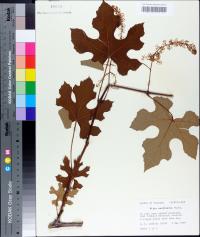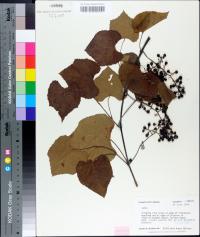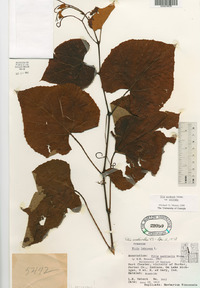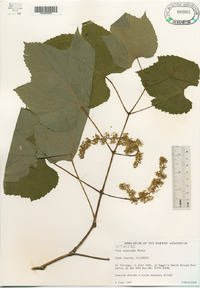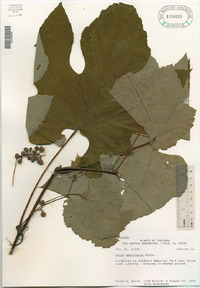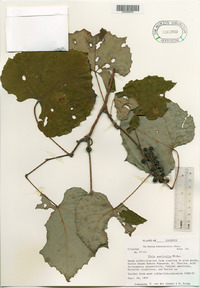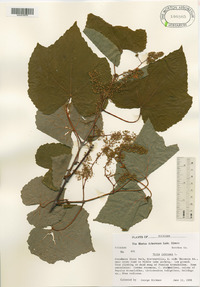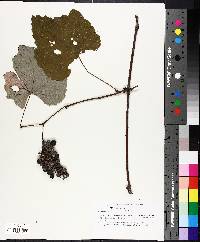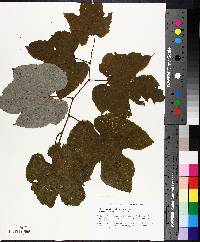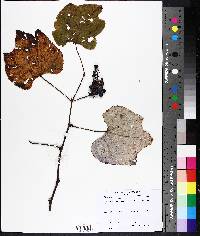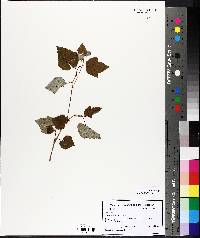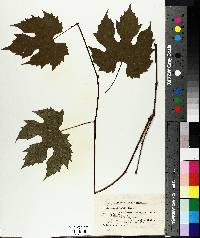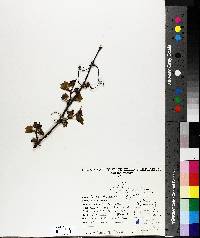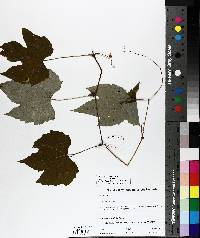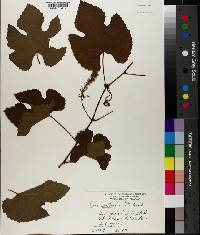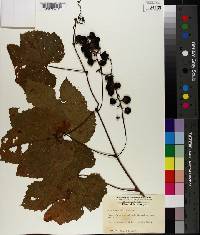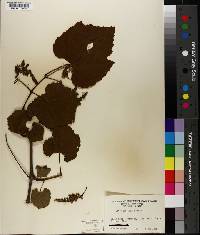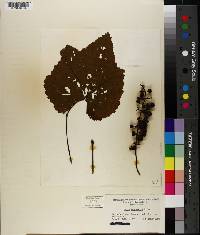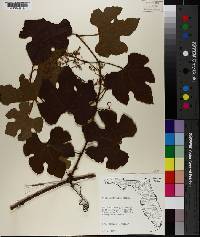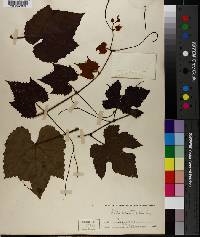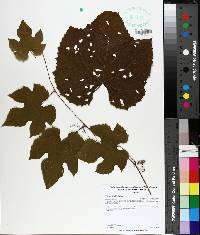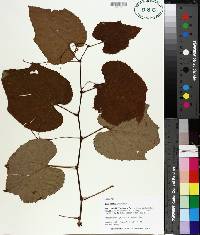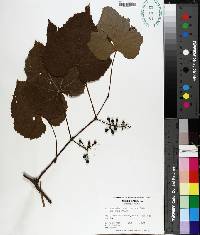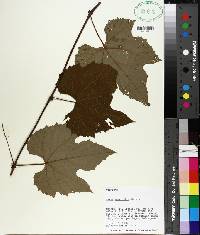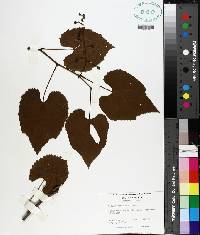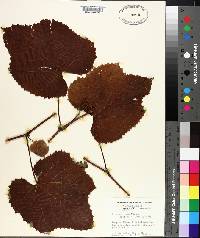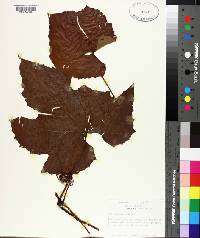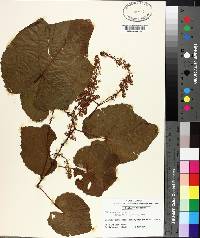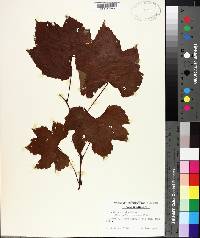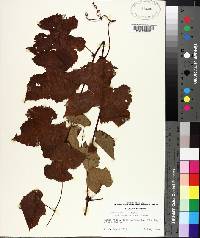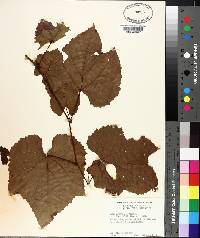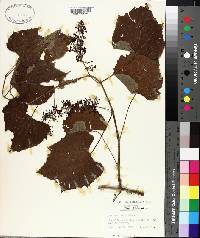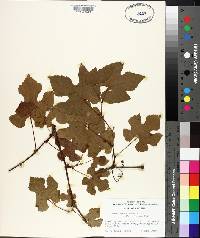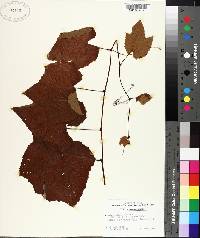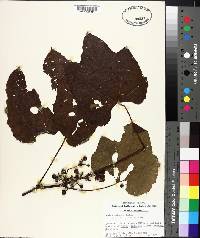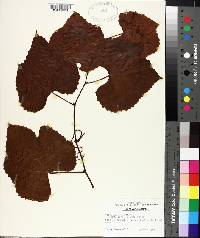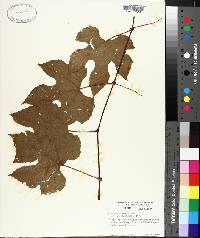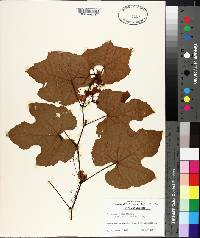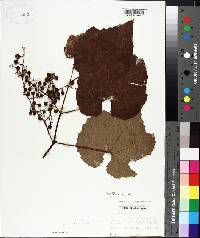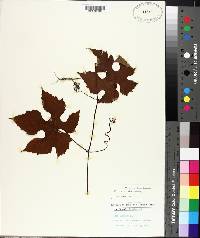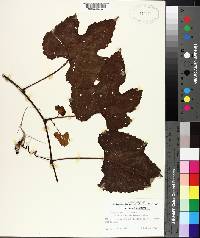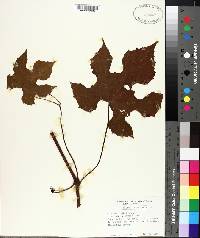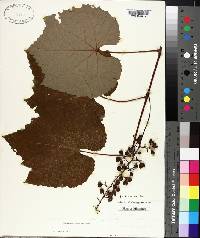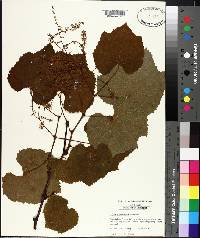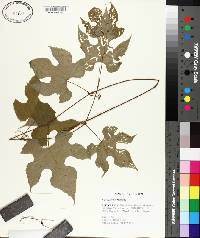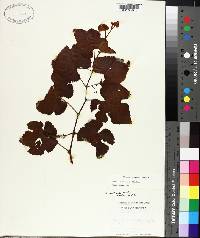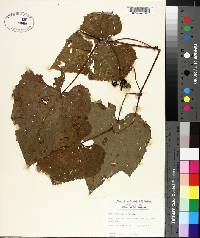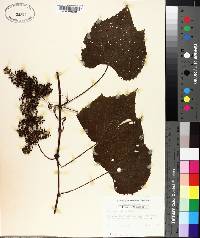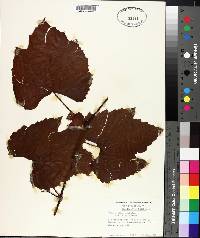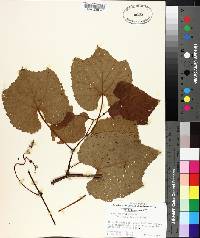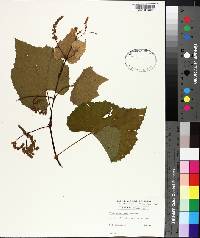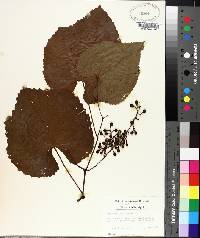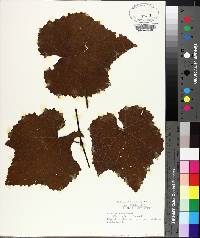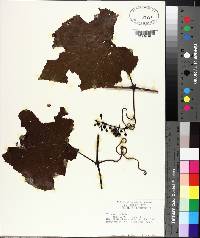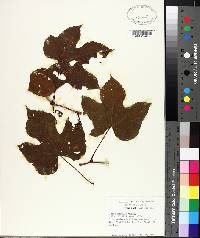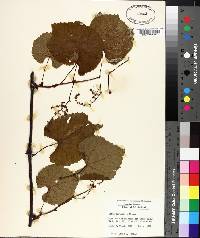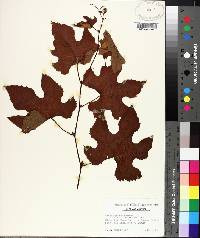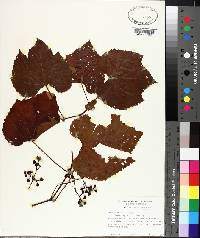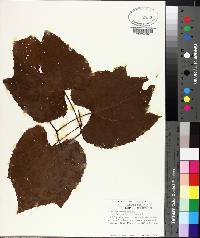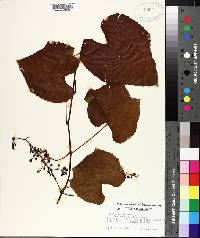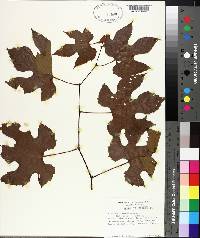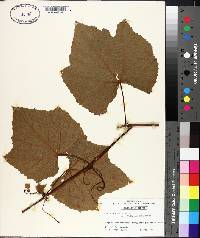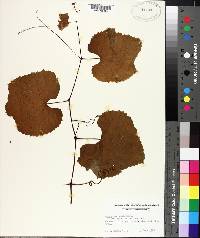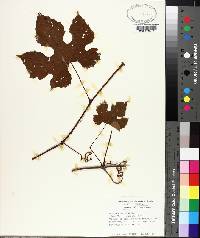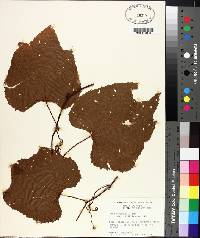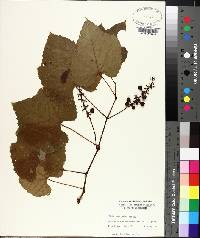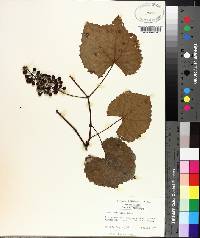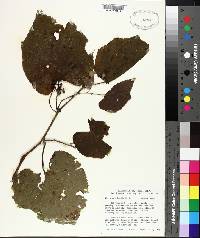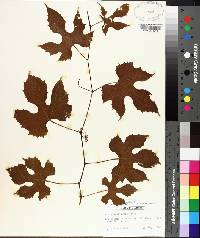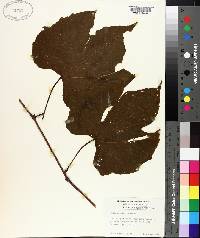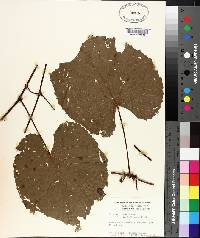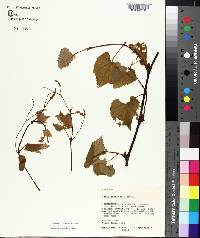Vitis aestivalis
|
|
|
|
Family: Vitaceae
Summer Grape
[Vitis aestivalis var. glauca (Munson) L. H. Bailey, moreVitis labrusca var. aestivalis (Michx.) Regel] |
Perennial woody vine to 10.67 m long Stem: high-climbing, reddish brown and hairy when young, becoming brown and shredding in papery strips, inner spongy part of stem (pith) chambered (1 mm or thicker) at nodes. Leaves: alternate, stalked, 5 - 20 cm long, yellowish green, egg-shaped to nearly rounded with a pointed tip and heart-shaped base, shallowly toothed, shallowly to deeply three to five lobed, both surfaces covered with cobwebby rusty hairs when young, sometimes with persistent hairs along veins, underside hairy and covered with a whitish waxy coating (glaucous). Inflorescence: functionally either male or female and borne on separate plants (sub-dioecious), borne opposite a leaf on the current year's growth (at no more than two successive nodes), 5 - 15 cm long, slender, loose, cylindrical. Flowers: numerous, yellowish green, tiny, five-petaled, fragrant. Male flowers have five long, erect stamens and a poorly developed pistil. Female flowers have a well-developed pistil and five short, reflexed, functionless stamens. Fruit: a juicy berry borne in hanging clusters, dark purple to black, 5 - 10 mm long, egg-shaped to spherical, covered with a light whitish coating (glaucous), containing two to four seeds. Seeds are reddish brown, about 6 mm long, and pear-shaped. Tendrils: opposite the leaves, at no more than two successive nodes. Similar species: Vitis labrusca has tendrils or inflorescences at three or more successive nodes and a lower leaf surface that remains densely hairy. Vitis riparia and Vitis vulpina are commonly lacking tendrils or inflorescences opposite every third leaf and the leaves become hairless except along the veins. Current season twigs of Vitis cinerea var. cinerea remain hairy after flowering and the lower leaf surface remains hairy at maturity. Vitis aestivalis var. bicolor differs from the typical variety because it has a distinctly bluish green to silvery lower leaf surface and is more or less hairless at maturity. Flowering: early to mid June Habitat and ecology: Locally frequent in sandy soils and shaded dune slopes. Occurence in the Chicago region: native Notes: Birds and mammals eat the fruit of this species, while deer feed on the leaves. Catbirds and cardinals use strips of the bark to build their nests. The vines are commonly used in wreath-making. Etymology: Vitis is the Latin word for vine. Aestivalis means "of the summer." Author: The Morton Arboretum High-climbing vine, the pith interrupted by nodal diaphragms; twigs terete; tendrils or infls lacking opposite each 3rd lf; lvs broadly cordate-ovate to subrotund, with narrow (45Щ to broad basal sinus, usually shallowly to deeply 3-5-lobed, when young covered with a reddish or rusty cobwebby tomentum on both sides, sometimes also with straight hairs on the veins, glaucous and persistently ±floccose-tomentose beneath; petioles and stems glabrous or sparsely pilose after disappearance of the tomentum; infl usually long (5-15 cm) and slender; fr dark purple or black, 5-10 mm; 2n=38. Moist or dry soil, open forests, roadsides, and thickets; Mass. to Ont. and s. Minn., s. to Ala. In var. aestivalis, occurring over most of the range of the sp., the persistent tomentum tends to obscure the glaucescence of the lower surface of the lvs. In var. argentifolia (Munson) Fernald (V. bicolor), occurring chiefly inland and in the n. part of the range, the tomentum is more completely deciduous, leaving the lower surface of the lf distinctly blue-green or silvery. Gleason, Henry A. & Cronquist, Arthur J. 1991. Manual of vascular plants of northeastern United States and adjacent Canada. lxxv + 910 pp. ©The New York Botanical Garden. All rights reserved. Used by permission. |
|
|
|

